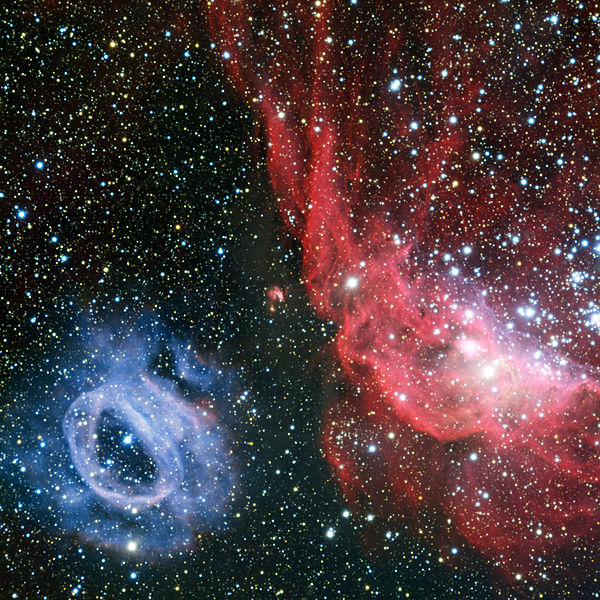
Usually when you see a blue nebula in an image, it’s a reflection nebula where primarily dust is reflecting star light. In this case NGC 2020 is apparently an emission nebula with ionized hydrogen causing most of the blue glow.
The pink-tinged cloud on the right, NGC 2014, is a glowing cloud of mostly hydrogen gas. It contains a cluster of hot young stars. The energetic radiation from these new stars strips electrons from the atoms within the surrounding hydrogen gas, ionising it and producing a characteristic red glow.
In addition to this strong radiation, massive young stars also produce powerful stellar winds that eventually cause the gas around them to disperse and stream away. To the left of the main cluster, a single brilliant and very hot star [2] seems to have started this process, creating a cavity that appears encircled by a bubble-like structure called NGC 2020. The distinctive blueish colour of this rather mysterious object is again created by radiation from the hot star — this time by ionising oxygen instead of hydrogen.
Image credit: European Southern Observatory CC-BY-3.0.